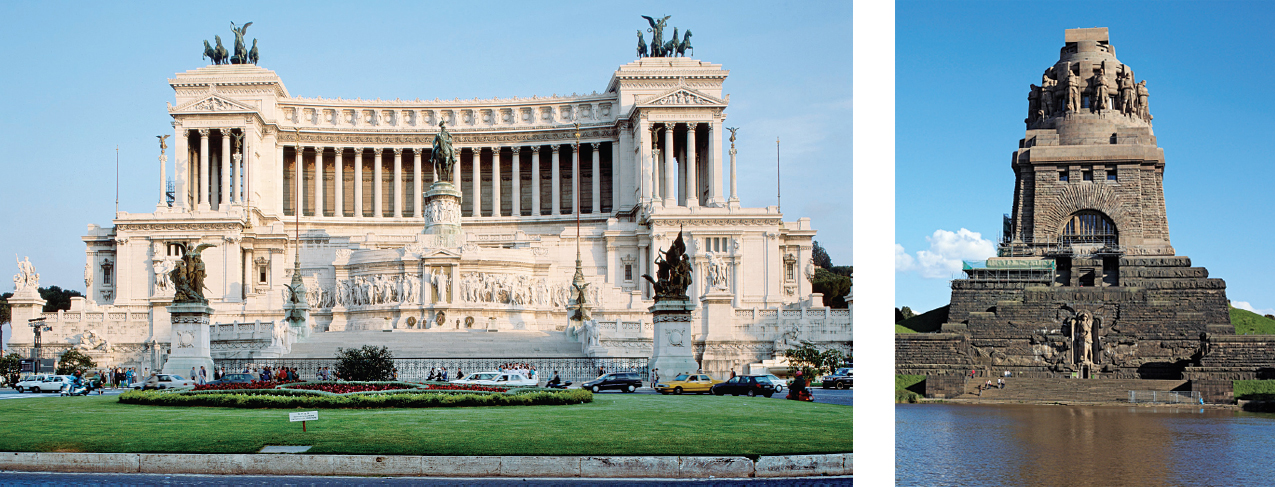
Building NationalismNationalism was built through ideas and action but also in stone. The National Monument to Victor Emmanuel II in Rome and the Battle of the Nations Monument in Leipzig, Germany, are just two of the many buildings, monuments, and statues erected around 1900 to represent the glory of the nation- n- e- h-
CONNECTIONS: Historians continue to ponder the immense popularity of nationalism around 1900 and indeed its ongoing resonance today. Can architecture help spread the popular appeal of the national idea? Are there similar structures in your own neighborhood or region? If so, when were they made and what do they represent? Do they continue to promote national values effectively?
CONNECTIONS: Historians continue to ponder the immense popularity of nationalism around 1900 and indeed its ongoing resonance today. Can architecture help spread the popular appeal of the national idea? Are there similar structures in your own neighborhood or region? If so, when were they made and what do they represent? Do they continue to promote national values effectively?